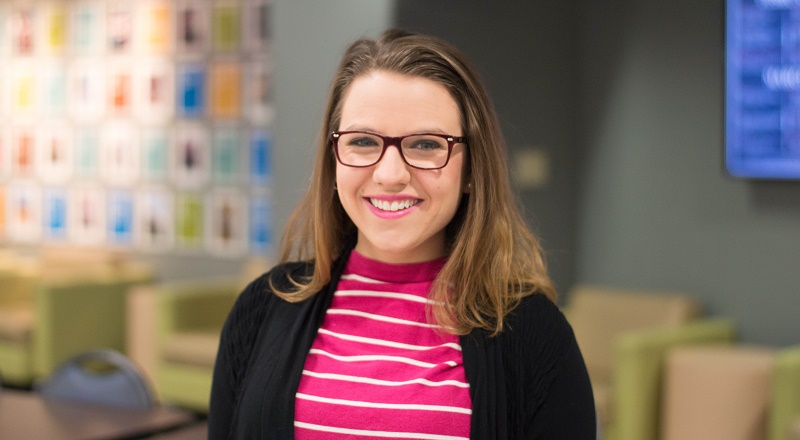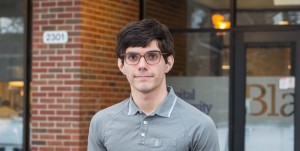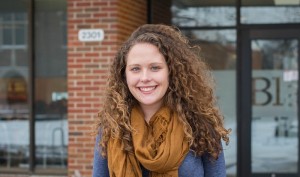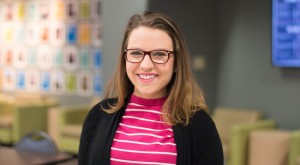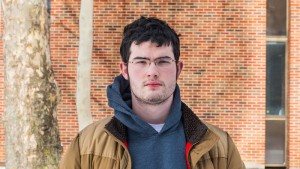The 2015 National Conference on Undergraduate Research (NCUR), to be held at Eastern Washington University April 16-18, has invited twelve Capital students to present their scholarship.
Their projects were chosen amidst over 3700 competing abstracts and speak to the variety of disciplines our liberal arts campus houses. Seeing as Symposium coincides with NUCR, The Chimes examined five of the ten approved projects so that the following students, each committed to their own specialized topic, may share their research with the student body.
Sirrus Lawson
Economics and political science dual major
Project title: The Impacts of U.S. Factory Farming
Advisor: Stephen Koch
Reasons why people and the U.S. government should not support the factory farming system:
- Environmental impact
“It’s an environmental disaster. It’s the number one cause of air polution in the U.S., the cause of ocean dead zones, the number one cause of amazon species extinction, etc….The U.S. is the biggest practitioner of factory farming, and we all influence the global market.”
- Human health impact
“It’s disgusting. Raising animals in hyper-contaminated, filthy conditions spreads diseases quickly. Amongst those are E. coli and salmonella. It’s also a breeding ground for avian flu and swine flu.”
- “The U.S. government subsidizes the factory farming more than any other industry, including our defense.”
- Animal cruelty
“Obviously, the list of ways we mistreat animals goes on and on and includes slaughter without anesthesia, battery cages, and gestation crates…as a result, they live among their own waste.”
Research Process:
“It began when I read a book by David Simon’s called “Meatonomics.” It’s founded on the principle of exposing how much the government subsidizes factory farming. I can definitely say it’s the best book I’ve ever read. The way he structures his arguments really inspires me. I actually backsourced a lot of my project information from this book. I also spoke to Ohio State University professor Mike Hogan…From conversations with him, this land we’re using as feed crop land can easily be converted to land that grows way more plant based foods.”
How is your project relevant to college students?
“As the voters and consumers of today, we not only can change where we source our money and what animal products we buy or don’t buy, but we have a choice in the way we demand where our tax dollars go…It’ll all make a massive difference in the future.”
Emily Gerken
International studies and history dual major
Project titles: 1) Preserving Culture, Developing Communities: The Role of Museums in Developing Countries 2) Spools of Faith: Ribbonwashing in Twentieth Century America
Advisors: 1) Brian Wallace 2) Thomas Maroukis
Project 1 synopsis:
“We kind of look at museums as a construct of the west, yet museums come from the Middle East and originate in North Africa…I look at museums within Kameron and Cuba and ask whether they are helping countries or bringing in international travelers. They might be great for the communities’s economies, but are they staying true to each country’s national identity of the community? I’ve found they’re not so usable to the local communities as far as education and local art culture.”
Why did you research this topic?
“I worked in a museum first-hand. But, museums within developing countries aren’t focused toward their own culture, so you don’t have any community outreach. So, if a museum isn’t being used effectively for the community, why use it?”
Project 2 synopsis:
“We use symbols all the time in history, but the ribbon has become extraordinarily popular within the U.S., whether people want to gain emotional attachment or achieve real good by wearing one…It all started with the yellow ribbon, which represented popularity with wars. When there’s high approval rating of a war, you’ll see more ribbons, i.e. the amount of yellow ribbons worn during the Vietnam War versus the Iran Hostage Crisis.”
Why did you research this topic?
“While I was online researching the ethical practices of charities, I asked ‘why do we have ribbons everywhere?’ It’s problematic when we don’t know what one of the many ribbons means. If anyone can create their own ribbon, how is that effective? I did a lot of research on the pink ribbon…Pink is a toned-down red, so it’s not supposed to be aggressive, but easy for women to relate to…but then I came across breast cancer ribbons with piano keys and zebra stripes.”
How are you feeling about NCUR?
“I’m feeling a little bit nervous, because I’m still trying to tie up some loose ends…but if you’ve invested so much time into a project, why wouldn’t you want the world to see your baby? I want everyone to become more aware of a topic I’ve become so immersed in.”
Carolyn Newberry
Public administration major
Project title: Knowledge of the LBGTQ Community and Opinion on Same-Sex Marriage
Advisor: Suzanne Marilley
Why did you research this topic?
“First of all, this is a hot topic and people like to talk about it…Opinions are complicated; it’s not my religion that has been affecting my opinions but everything compiled together. I think further studies on this topic need to be done.”
“Brittany Hodge, my research partner who graduated last year, and I started researching last year, presented this project at Symposium, and got it published in Epistimi….I’ve been involved with Pride (I’m the President this year) and have been a Safe Space coordinator for years. When I took social science methods, I thought about how Capital is a religious institution and wondered if it affected people’s opinions on same-sex marriage. We realized it didn’t, so we wanted to look at all the different facets affecting opinion on same-sex marriage.”
How did you conduct your research?
“We did our survey through Survey Monkey with 80 some participants. We looked at participants’s religion, level of education, out-of-class lectures, family, politics, social media, news outlets, newspaper, TV news, age, and interactions between social media and traditional new sources.”
Research results:
“One thing our research showed was that people who are interested in same-sex marriage will seek out-of-class lectures, hence the large turnout for Pride’s Trans* Panel. We also found that people tend to trust social media more than media outlets like CNN…We conducted our poll before the trending hashtag sidebar; we actually kind of predicated that.”
Emma Caputo
Spanish and international studies dual major
Project title: Making the Invisible Visible: The Hidden Interconnections that Cover and Subject the Latina Woman Immigrant
Advisor: Maria Jose Delgado
Project synopsis:
“I discuss how health care, education, social status, and gender are all related and how we may try to separate them, but one affects the other. Latina women are suffering invisibly, mostly within the home or along the border, but we’re really unaware.”
Why did you research this topic?
“I think that women in general don’t get a lot of press. I think a lot of what they go through is invisible. The main focus is on the immigrant man, whether he’s a chef or a landscape worker, and we don’t ever see what the woman is doing.”
Who is your project audience?
“I am directed my project toward everyone. In the ‘70s in Argentina, a group of women whose family members were killed made sure the government knew they were suffering by demonstrating in Plaza De Mayo. They made their private problem public. That’s what I want to do. If we really value human rights, the border shouldn’t matter.”
Interesting fact:
“I wrote the entire project in Spanish. I was nervous in the beginning, but Professor Delgado helped me a lot with prepositions and such.”
Andrew Ours
Computer science and math dual major
Project title: The Effect of Intersections on the Flow of Urban Traffic
Advisor: Paula Federico
Project synopsis:
“What I was trying to look at is what definite point do stoplights become more effective than stop signs. I compared data to a model that I created to data I took out in the field, finding there’s actually a definite point where stop signs stop being useful….What I’m hoping for is to use a model similar to mine, take data from a proposed or existing street, and decide whether a stop sign or stoplight intersection would be more effective.”
How did you collect your field data?
“During rush hour, I went out to the intersection of High St. and Broad St. and to the stop sign at Cassady Ave., videotaped data over several days, and analyzed it. There are peaks in traffic, but over a small time period, 45 minutes to an hour, the rate at which traffic flows into a street is going to be roughly the same. I used these videos as evidence to say my model was correct.”
Why are stop signs less useful?
“At its heart, it’s differential equations. I was examining flow-in and flow-out and how do they change in respect to time. Because a car has to continually stop at a stop sign, the wave motion that it makes causes traffic to compress and jam up. With stoplights, there’s really no cap to how many cars can get through in an hour; it’s limited by the road, not by the light.”
Why did you research this topic?
“My inspiration came from a show I watched in eighth grade called ‘The Universe.’ They were talking about how traffic kind of mimics blood flow in arties; you get pulses of traffic…After reading through some papers, I realized there’s this very big model called the cell automaton model, which is a much more complicated version of what I did. I basically simplified it to one-lane roads, making a specialized case for urban planners.”

